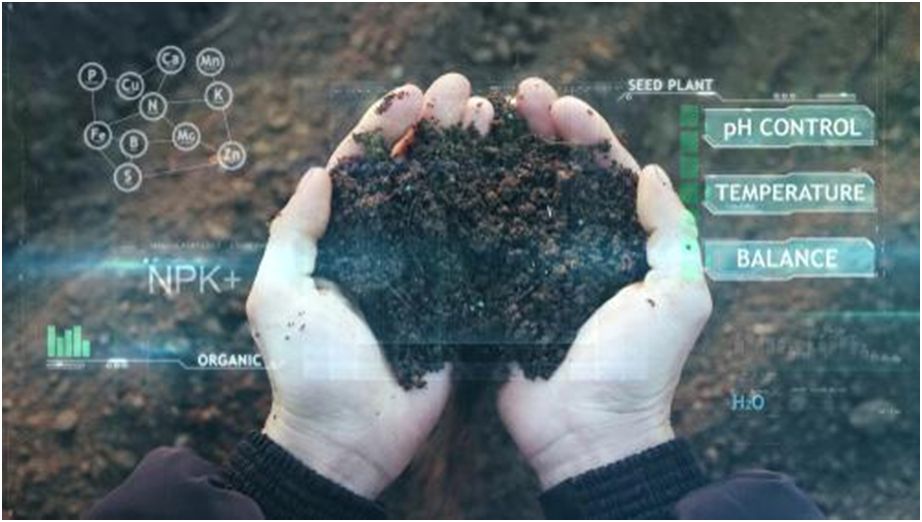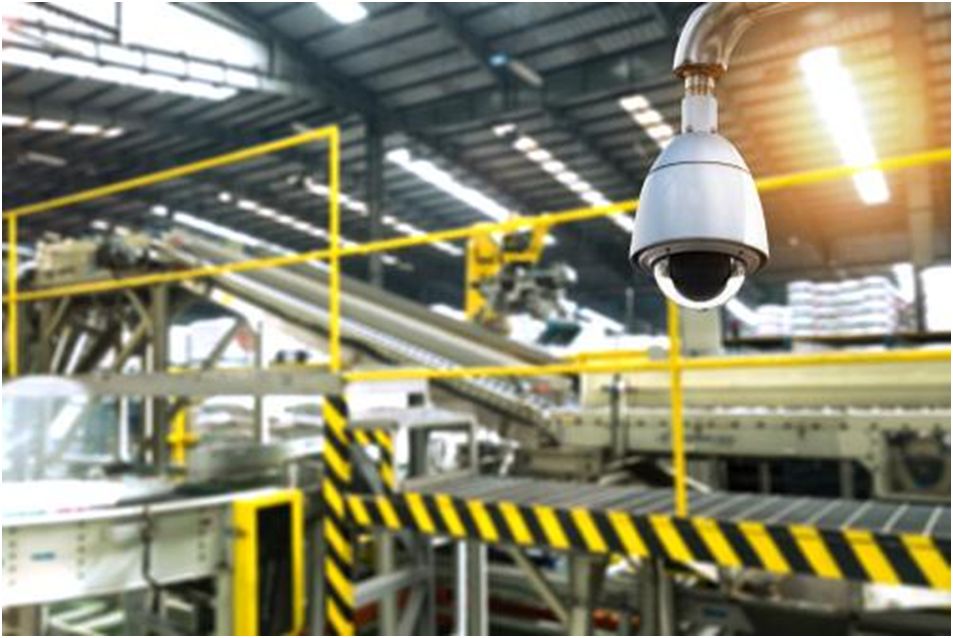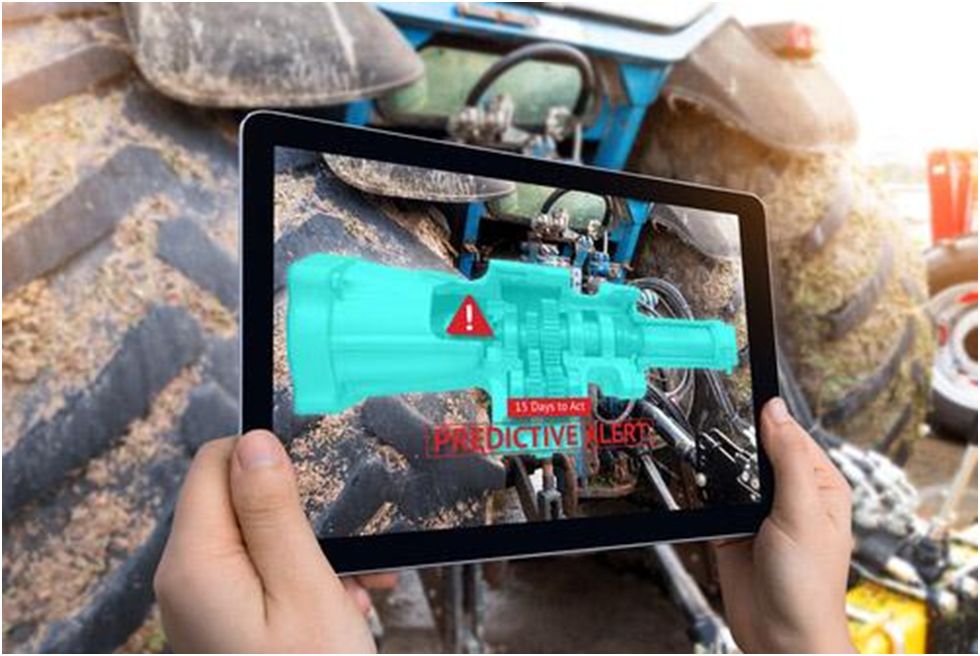Artificial intelligence (AI) is opening unprecedented opportunities for industries, businesses, and corporate leaders alike. With a rapid pace of adoption, institutions of all sizes are making efforts to leverage AI technologies to generate significant value. The immediate benefits of harnessing AI-powered automation include in-depth insights, improved services, enhanced quality, and increased savings and productivity. As Gartner predicts, by 2024, AI augmentation will generate $2.9 trillion of business value and 6.2 billion hours of worker productivity globally.
In this article, we explore how artificial intelligence is paving its way into the manufacturing industry to deliver value and benefits. Early adopters of AI in manufacturing are witnessing a minimum of 20% improved productivity even at entry levels. Let’s discover how and where AI-infused automation is making strides in the manufacturing processes with these 5 effective AI applications.
5 Applications of Artificial Intelligence in Manufacturing
1. Smart Inspection of Quality and Packaging
Manufacturing quality products is at the forefront of every production house, whether small or large. This basic manufacturing principle has continued to strengthen the foundations of manufacturing companies from the industrial revolution to industry 4.0.
However, for small and medium businesses, it is challenging to maintain quality with quantity while keeping the operational cost in check. Manual inspection of product quality, defects, and inconsistencies is inefficient at spotting granular anomalies in production lines. In addition, there are several other challenges with traditional quality inspection and control exercises as mentioned below-
- Time-consuming quality audit
- Hugh investment required
- Extensive testing
- Unskilled operators
How does AI overcome Quality Assurance Challenges?
Today, emerging technologies such as IoT devices and artificial intelligence are demonstrating significant scope for automating traditional quality control practices. In fact, leading manufacturing centers such as Google, Nike, and Nissan are using AI-powered insights to optimize manufacturing processes.
Algorithmic advancements in machine learning and deep learning are powering technologies such as computer vision to improve quality control functions. AI’s data processing capabilities are giving birth to time and cost-efficient computer vision solutions, such as-
a) Image recognition
AI can analyze product images captured in camera sensors installed to identify defects and conduct visual inspections. In contrast to manual screening methods, AI can automate quality tests and improve productivity by as much as 50%.
b) Object Detection
Under computer vision, object detection technologies are beginning to enter quality inspection systems for detecting faulty goods from the production line. These systems can be trained with variable defected images and data to accelerate the quality measurements of machine output.

c) Yield Enhancement
In agriculture, computer vision technology can analyze soil and yield conditions to generate actionable insights for farmers. In combination with deep learning, computer vision can improve agricultural productivity by measuring plant growth, temperature, gaseous content, and more.
2. Robotic Process Automation
Industrial robots are still facing technical limitations that prevent them from adapting to high-volume production and compliance. They are unable to perform tasks out of their routine settings efficiently and hence require constant human intervention.
With advancements in AI and machine learning, robotic process automation (RPA) is beginning to outperform human experts in specific environments. The new generation of robots is flexible and easier to incorporate into industrial settings. However, as we train these robots, it is ideal to maintain a healthy balance of human-robot collaboration for-
- Increasing productivity
- Saving development costs
- Strengthening safety for the worker, and
- Running independent systems with accuracy.
How to incorporate RPA into manufacturing plants?
Step1: Build semi-supervised machine learning models
The first step is to implement unsupervised and semi-supervised machine learning by training models with variable objects, tools, and components. It enables machines to recognize these objects on production lines and streamline movements accordingly. In the initial stages, human operators would be required to instruct the robots in learning the appropriate movements and actions.
Step2: Train for repetitive tasks
RPA is best suited for training machines to perform routine tasks such as handing over goods from conveyor belts, packaging, assembly, etc. With repeated training, robots improve and excel in their algorithms to complete such tasks naturally and increase productivity.
Step3: Encourage independent functioning
Once the robots are well-familiar with repetitive tasks, they can be run and tested independently to handle slight variations. However, it is important for the instructor to monitor the robot’s movements remotely to prevent any accidents.
Step4: Monitor using computer vision
As the instructor and robots come into lay together, computer vision surveillance can ensure safety by identifying the presence of safety accessories. Also, deep video analytics can be used to monitor robot-only areas where anomalies can be deducted in real-time to maintain asset life.
3. Video Surveillance for Supply Chain Monitoring
Video analytics is one of the leading applications of artificial intelligence. The power of AI is enabling us to explore new dimensions of studying, analyzing, and monitoring data. With the vast amount of information at our fingertips, AI technology is helping us gain fruitful insights.
The world of logistics is one of the biggest gainers from video analytics with the help of AI. Companies can streamline the logistic operations by eliminating hiccups and delivering a high-performance experience. The consistent advances in AI and deep learning are now enabling the automation of tasks that earlier required human intelligence. Various applications of video analytics such as classifying image and object, recognizing license plates of automobiles, or detecting parking spots are shaping the future.
So how does video analytics actually work?
The surveillance cameras that monitor the day-to-day movement of every living and non-living objects gather the data. This collected data is analyzed under the analytics part by the devices with intelligent capabilities. Deep learning and artificial intelligence are at the core of video analytics. The intelligent cameras that are now being installed are powered by AI and perform embedded video analytics including detection of objects and faces, analyzing images, etc.
Applying Video Analytics in Supply Chain
In the field of logistics, video analytics is of great use. Through the AI-powered cameras, proper functioning of automobiles carrying the supplies can be ensured. Companies can also track the safety and security of their assets. For instance, if the worker at the warehouse is properly managing the inventories or not. Video analytics can also track if there is any need for reinforcements by analyzing the shelves in the warehouse.

With technologies like computer vision, deep learning, machine learning, video analytics can be a game-changer for industries. The logistics and supply chain systems are areas where video analytics can set examples.
4. Predictive Maintenance for Heavy Machinery
Tracking and maintaining heavy equipment is an important part of the manufacturing industry. By doing so, the proper functioning of such types of machinery can be ensured. With the advent of artificial intelligence, monitoring the health of heavy machinery in real-time is now possible. Predictive analytics is the technology that can help manufacturing companies in managing heavy equipment efficiently.
Companies can term it as a predictive maintenance program that can help them cut operational costs and maximize RoI and profits. The implementation of technology in the right manner can also give a competitive advantage in the field.
How does predictive maintenance work in manufacturing industries?
Predictive analytics take into account several factors to establish a trend and use it to predict how the trend will unfold in the future. For a piece of equipment, it takes data mining, predictive modeling, ML, statistical algorithms to carefully analyze its performance and then predict future performance, such as any possible malfunction or failure. The more readings it takes into consideration, the more accurate prediction will be.

Predictive analytics can be used to monitor critical factors such as the run time of engines, fuel level, the battery voltage of their equipment. All these data are then put into a predictive model that runs on machine learning algorithms to predict the future behavior of the equipment.
Benefits of predictive maintenance
Predictive analytics can be of great help for the manufacturing industry that deploys heavy equipment for production. Some of the key benefits are:
- Early detection of possible problems in the machinery
- Easy and cost-effective service of equipment
- Reduction in operational and maintenance costs
- Improved efficiency
- Less downtime
- Enhanced safety of workers
- Elimination of breakdown time
- High return on investment
The above benefits clearly suggest how predictive analytics can help manufacturing companies to stay ahead of the curve.
5. Waste Management for Ecofriendly Operations
Manufacturing industries are known to produce huge waste materials as the byproduct of their process. Major amounts of waste are sent to landfills or get dumped into the ocean, thus leading to a negative impact on the environment. With the growing concerns of environmental problems due to poor handling of garbages emerging from factories, it is important for them to deploy an efficient waste management system.
Artificial intelligence can enable smart recycling and waste management by automating the processes of garbage collection, sorting, and disposal. The smart AI algorithms can also enable factories to adopt sustainable recycling methods.
How does AI facilitate efficient waste management?
Robotics has now become an integral part of various industries. An AI-powered robotic waste sorter can be considered a good move by the companies to enable smart recycling of waste materials produced. These robots are empowered with artificial intelligence, computer vision, machine learning, to perform tasks such as picking up the garbage, detecting its type, and sharing the data with the main server for proper analysis. The main server will now process the garbage collection and will assign a proper disposal or recycling method as per the garbage category.
After this, the disposal or recycling of garbage can be easily carried out. This shows how AI can play a major role in helping industries to manage waste.
Benefits of AI-powered Waste Management System
AI has revolutionized the waste management system. Several other methods powered by AI are now in business to help proper waste management. Let us look at some of the key benefits of using AI in managing the waste:
- Quick and easy detection of the garbage and its categorization
- Proper disposal or recycling of waste
- Cost reduction in managing waste
- Less harm to the environment
- Significant decrease in waste generation
The above-mentioned benefits show how technology can change the way industries perform waste management and result in eco-friendly operations.
Future Prospects of Artificial Intelligence in Manufacturing
Artificial intelligence is reshaping the future, be it any sector, like finance, education, construction, food, manufacturing, retail, transportation, etc. The proliferation of technology in these industries is already giving results. Under manufacturing, AI has several applications to redefine the way businesses work.
At present, AI is linked to automation but in an intelligent way. The machines or robots are now capable of learning on their own based on smart algorithms and perform the task more efficiently. With AI in business, the manufacturing industry is set to experience it on a large scale in the coming years.
AI will bring the following changes in the future:
- Automating the repetitive tasks to enable humans to focus more on important tasks
- Increasing the efficiency of operations by reducing human errors
- Providing higher quality assurance
- Quick and efficient decision making
- Reducing the overall operating costs
- Enabling quicker expansion of companies
Final Thoughts
Artificial intelligence, machine learning, and deep learning together constitute the foundations of Industry 4.0. With revolutionary data processing capabilities, AI along with other IoT devices is surpassing human efficiency levels in major domains including manufacturing. From agriculture and aerospace to healthcare and consumer packaged goods, AI is set to create a long-lasting impact on diverse manufacturing units worldwide.
To gain a competitive edge, industry leaders must understand the opportunities, assess the practical use cases, and trigger successful AI implementation. The substantial business benefits of AI can only be realized if humans and technology work in tandem to improve processes.
In manufacturing, AI is poised to improve productivity, reduce operational costs, and enhance product quality by combining various technologies. AI solutions including predictive maintenance, video analytics, object recognition, and RPA are demonstrating transformative potential for the manufacturing industry. The road ahead calls for data analysts, researchers, operators, and manufacturing houses to come together and innovate manufacturing processes with AI.